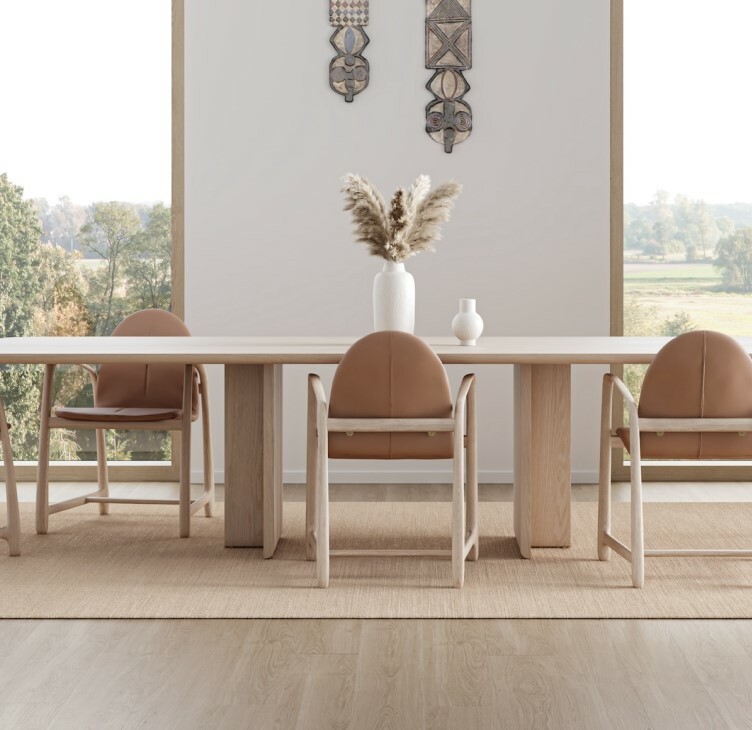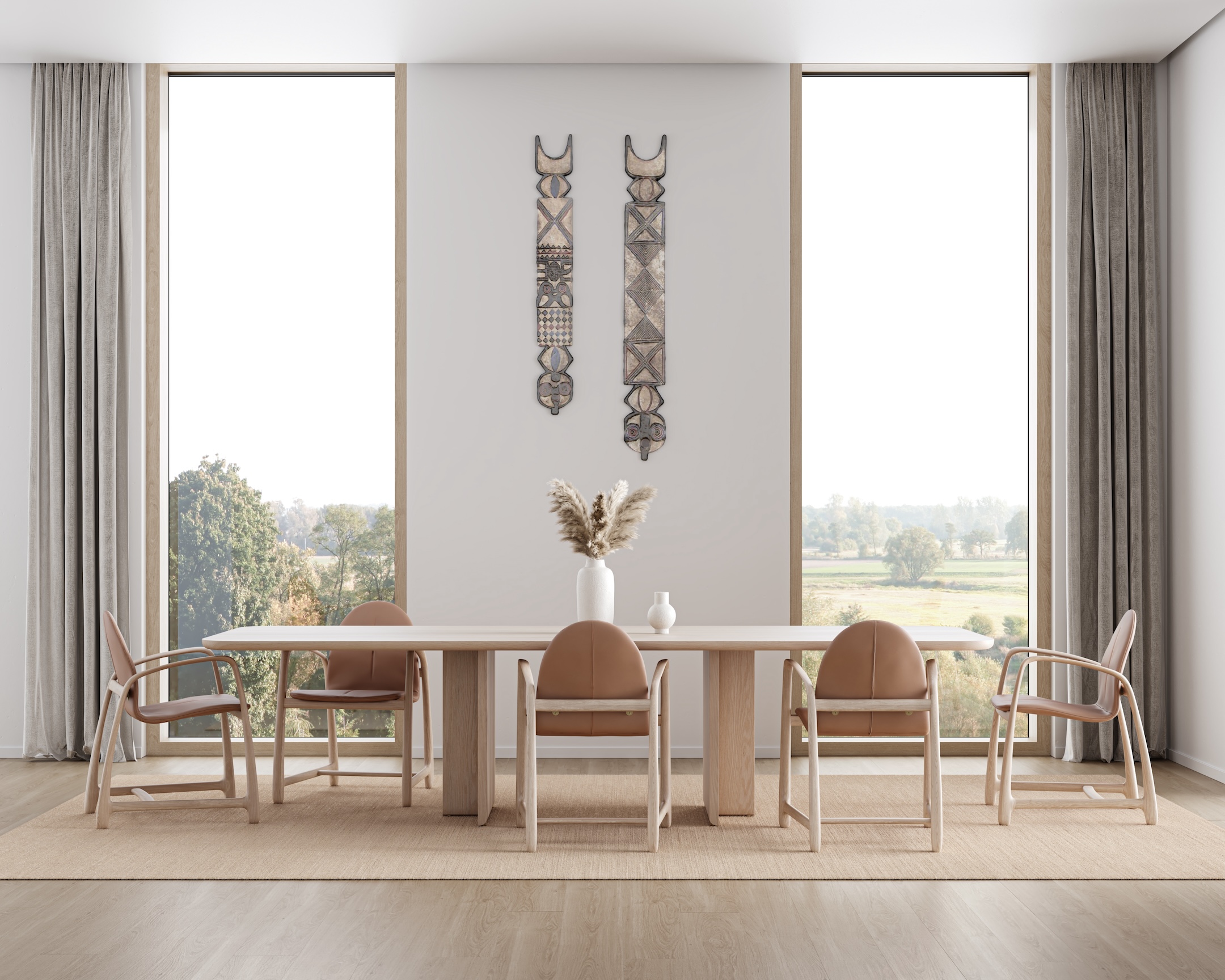“Beauty without workmanship is superficial,” states Skram founder Jacob Marks in the 2023 film the brand collaborated on making with Ted Beagles. Titled Ethos, it explores Marks’ expressive yet measured design practice in a genuine, almost meditative way. His voiceover weaves a story of dedication and deliberateness, drawing us into the inspirational surroundings of the Piedmont province region of North Carolina where his company is based.
Skram’s pieces – whether it be a table or mirror from its Drop series, a handsome Lineground 3 Drawer Bureau, or an appealing V4 Arm Chair (pictured above) – are meant to not only stand the test of time, but to define it. Marks goes on to say in the film that he and his team are “interested in beauty that is enduring and can be sustained.” In other words, this is furniture made for life-long enjoyment and beyond.
Since its founding in 2001, the brand has strived to produce work that possesses an heirloom quality while speaking to the contemporary moment; and this bent for cross-temporality makes sense given that Marks honed his design and making skills while working in a cabinet shop when he was a history student.
Here, Marks deepens the conversation about his work by discussing his unique perspective, his influences, and how he keeps his creativity flowing.
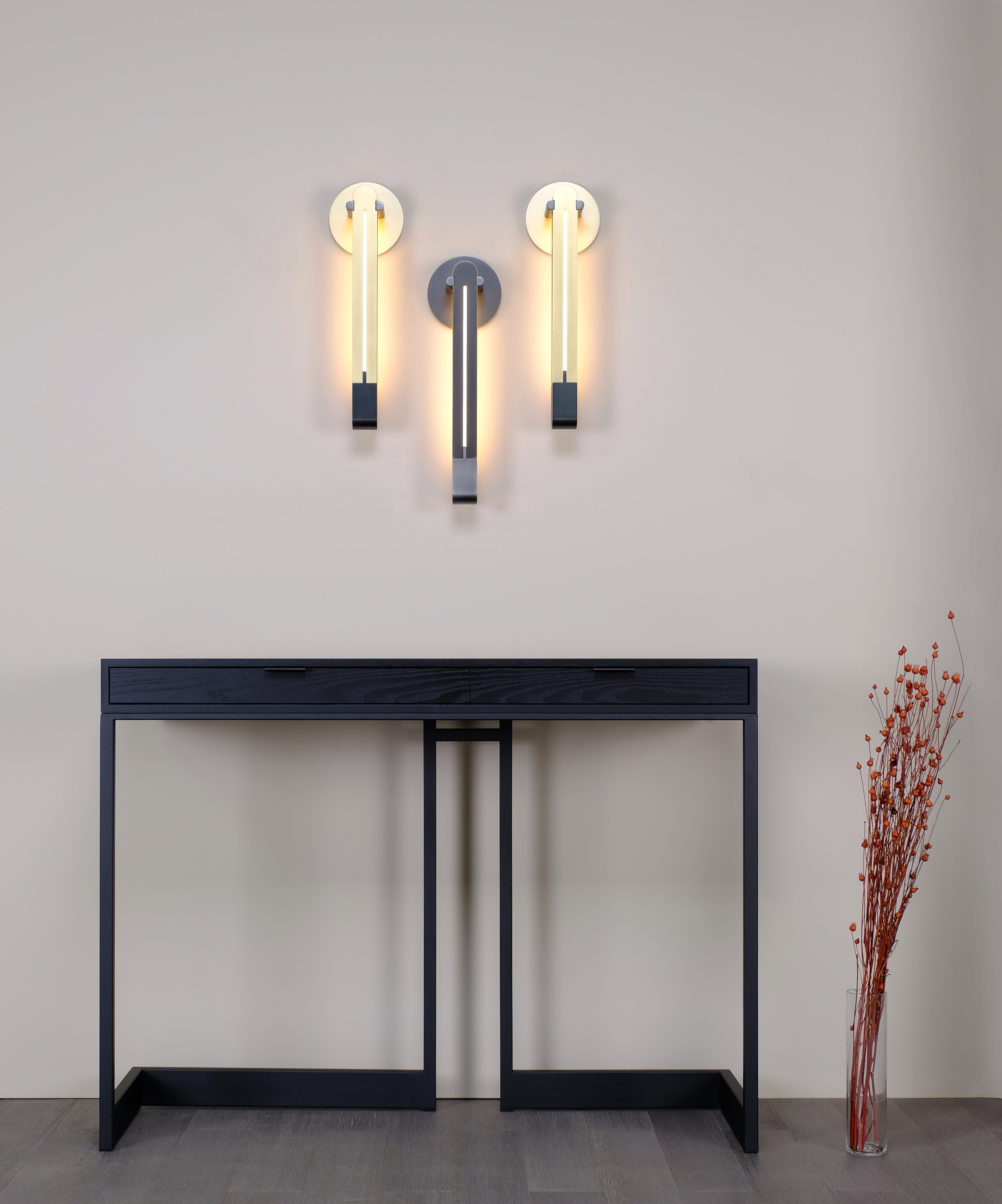
Skram’s intriguingly elegant Wishbone 2 Drawer High Table is available in a range of sleek wood veneer finishes.
Tell us about what drew you to design.
My background is a bit unconventional in terms of the world that I exist in now. I'm a self-taught furniture designer and maker, and I came to it from studying history; I didn’t study design. When I was younger, I had a certain amount of insecurity about it. But there came a point when my background developed into an asset– I realized that it enabled me to have a different perspective and afforded a uniqueness to my “voice” in the design world.
I had every intention of becoming an academic when I was studying history. Back then, my craft was writing, and what I value in that practice – the preciseness and accuracy, as well as the need to create engagement and not be “boring” – is something I see as being connected to my design work. There’s a balancing act between creating a beautiful object and a well-made object; these notions come together to become what I would define as the essence of truly good design.
What influences your work – were there any early encounters with design that have remained in your consciousness?
I grew up in the Midwest and through visiting places like Chicago, I began to understand the role that architecture and design has in creating expectations. The way a grand building on a school’s campus, for instance, is meant to inspire its “occupants” to be better; a sense of expectation is set that reinforces the idea of scholarship. And an overflow trailer at an elementary school in North Carolina also communicates what’s expected of the students who use it, but with the opposite effect.
I'm also interested in the way that humans develop sentimental attachments to inanimate objects. A cup would be a good example; a favourite cup becomes so because of the way that it fits in my hand, the way it keeps my coffee warm – but not too warm, that it has just the right form, and it's pleasing to look at. It's that perfect harmony. Or there’s the way that my briefcase looks better as it gets more banged up. The workmanship, the aesthetic, and the materiality present a merging of considerations that make it more than just what it is; and it creates the idea that an object evolves with you.
That’s what I’m really after in the work that we do. How do we fight against the distance that’s been placed between us and the things that we use every day? How do we reinforce that it’s more gratifying to develop a relationship with an object, so we want to care for it and fix it, rather than watching something that’s nice-looking become less so, and then it gets thrown away and we move on to the next thing?
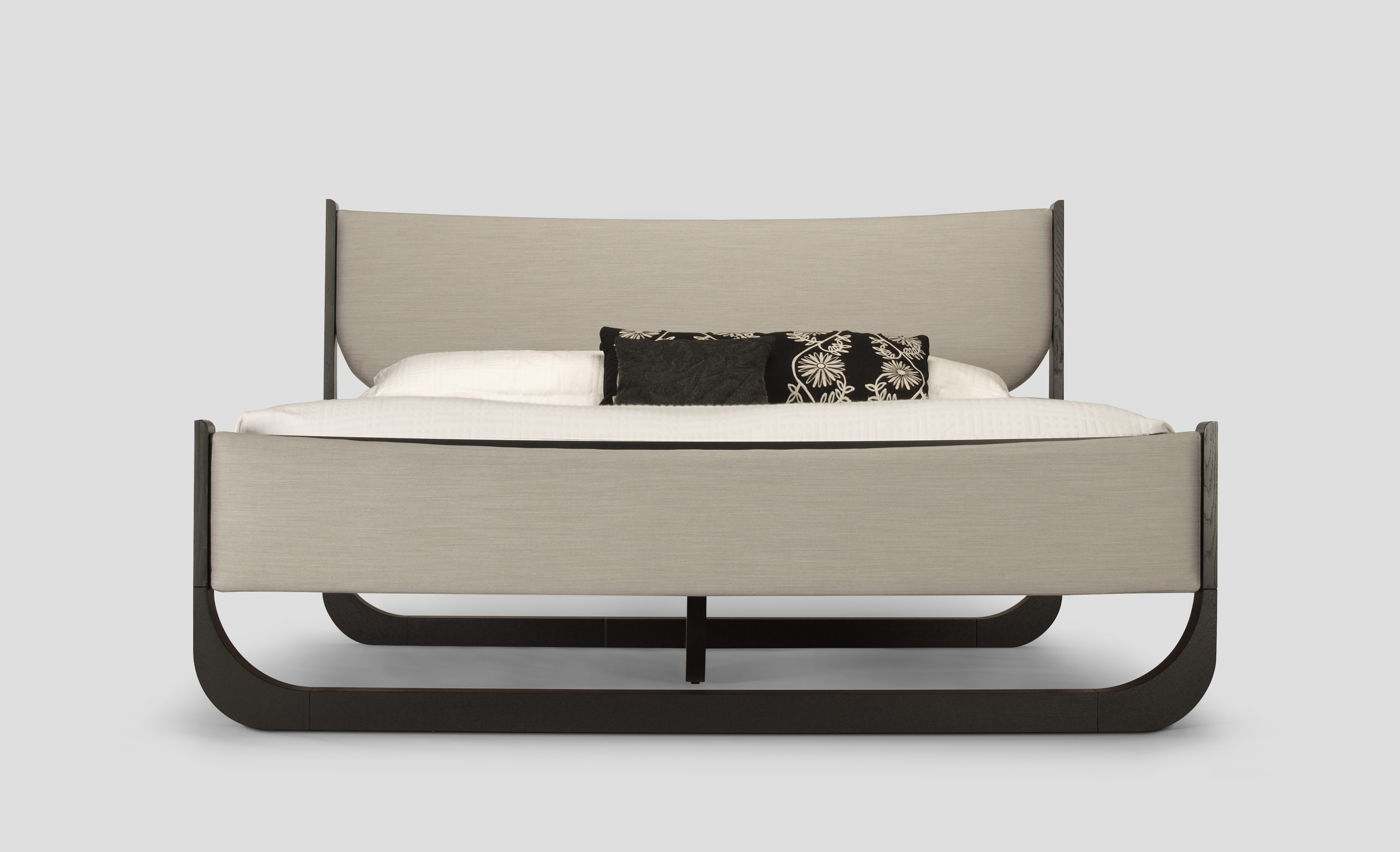
What invigorates your creativity?
My work is so immersive, so going out into the wilderness is important to me. There’s a humility that I feel in that setting; I feel small, but in just the right way. It’s not a feeling of insignificance – rather, there’s a context that we all can so easily forget is there. And it’s not healthy to forget that we’re part of something bigger.
Day-to-day, I find that a lot happens for me while I sleep in terms of solving problems related to designs that require modifications or a new direction. Ideas often get resolved when I’m not consciously thinking about them.
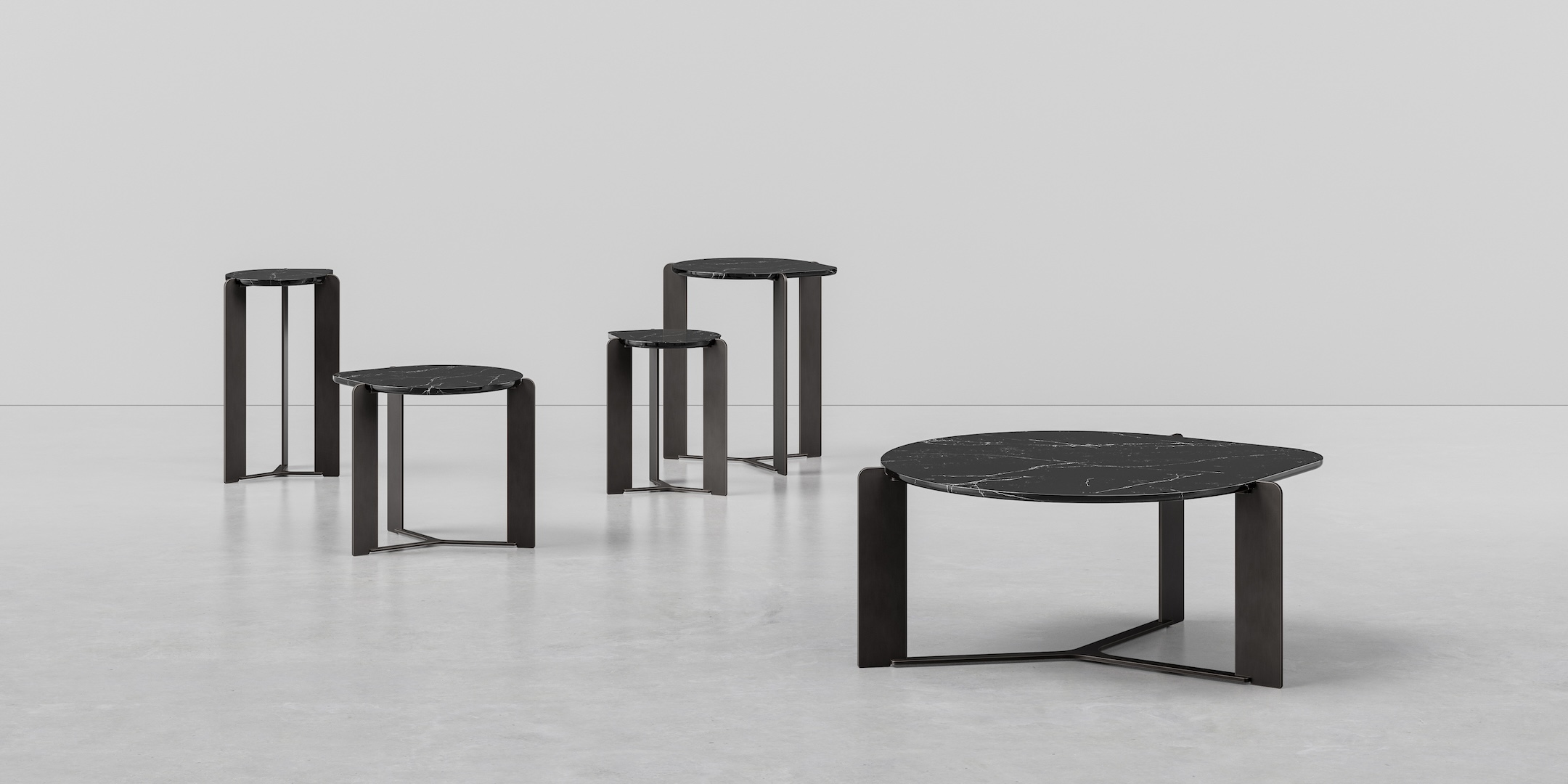
“Each material is doing what it does best,” says Jacob Marks about Skram’s Drop collection, which offers pieces in stone, wood and cork.
Let’s talk about the Drop series, which features two table designs that have recently been relaunched.
We’ve been working on this series for a while. It explores the use of one distinct shape in different interpretations of form, negative space, and volume. Here we’re pushing what this form can do by not only using different materials like cork, wood, stone, and metal, but through having different functions such as a stool and a bowl and a table; all these different typologies based on one single, basic shape.
I think this series says a lot about our brand in terms of us seeing how far we can take an idea without pushing it to the point of contrivance. I love the materiality and the visual weight of the relaunched tables; how they have a sense of openness but also of being grounded. Each material is doing what it does best.
Can you expand on how materiality comes into play in a Skram design?
When we're prototyping something, it only ever gets prototyped in black, which essentially means that the form of the design must be able to stand on its own. The materials are there to accentuate what is already good.
We only have one rule when it comes to the materials we use, which is that they must be natural, or made from natural elements of the earth. It’s an amazing thing to take a design to the next level in terms of introducing the tactile aspects of certain materials while bringing in the use of other senses; for example, when you walk into our showroom in New York, and you can smell the leather.
We want to take advantage of the materials we use to tell the rest of an object’s story – to enhance the story that is in the design. But I try to be cautious that I’m not relying on materials to do my job, which is to design something well.

